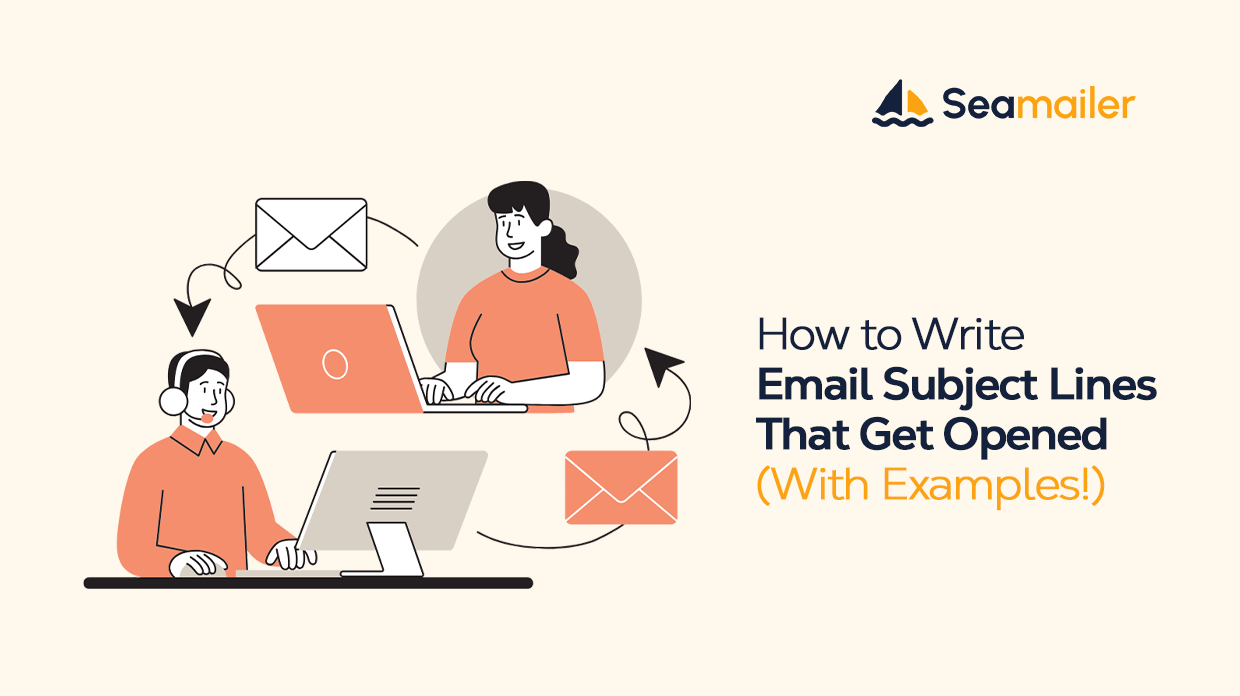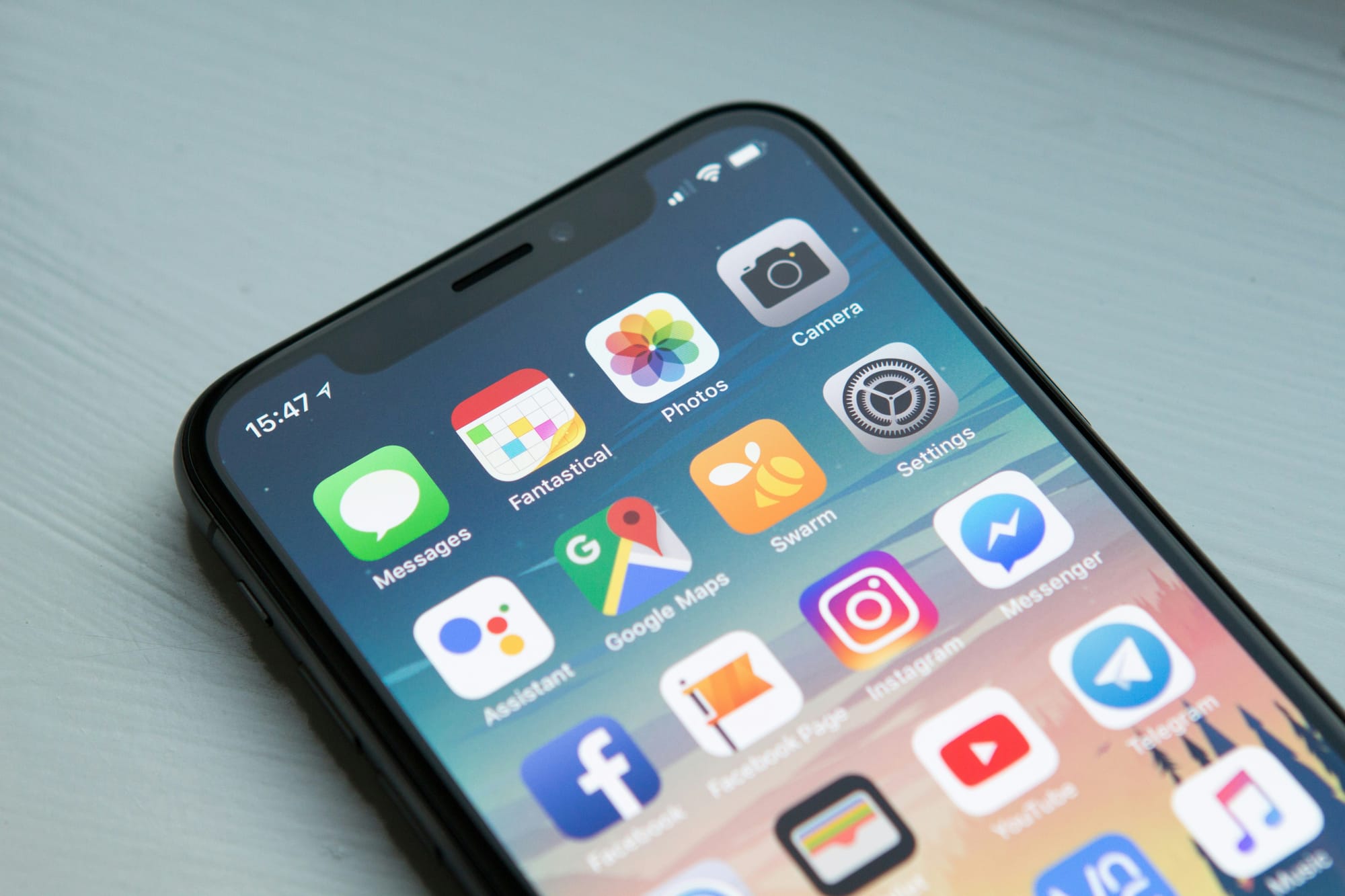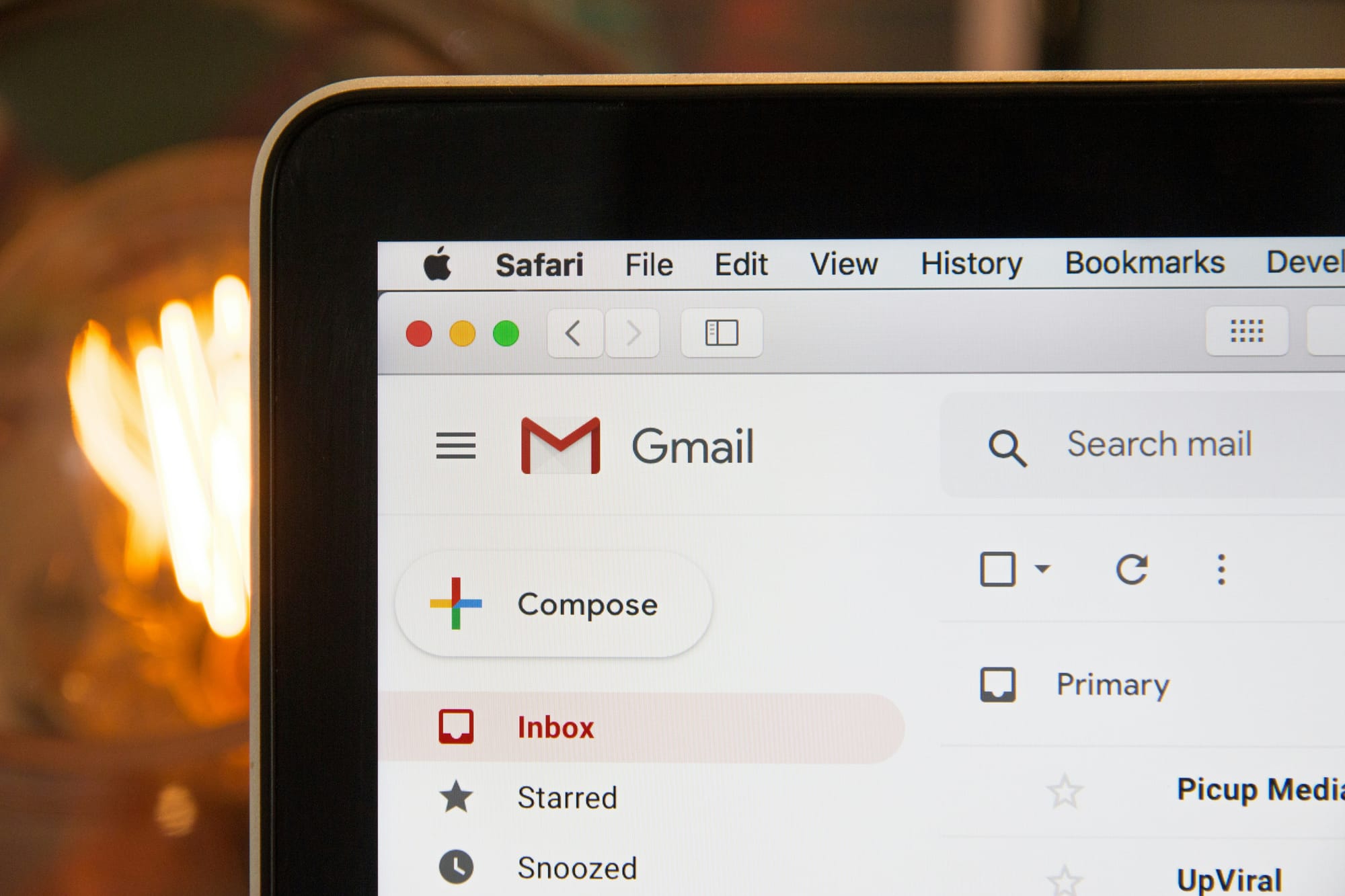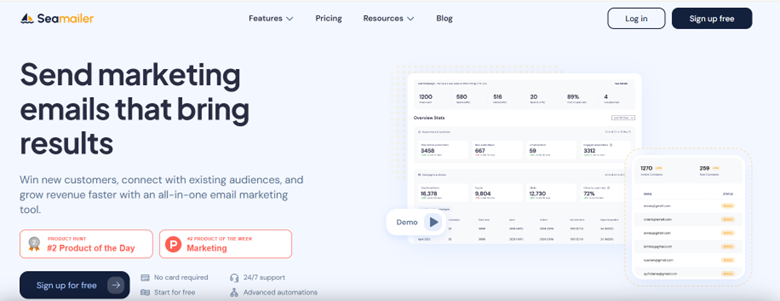How to Write Email Subject Lines That Get Opened (With Examples!)

If there’s one thing I’ve learned after years of writing emails - both the kind that crush it and the kind that flop - it’s this: your subject line makes or breaks your email.
Think about it. How many emails land in your inbox every single day? Dozens? Hundreds? We’re all drowning in them. And yet, we don’t open all of them - we skim through and click only the ones that spark something in us.
That “spark” usually comes down to one thing: the subject line.
I can’t tell you how many times I’ve poured hours into crafting the perfect email body, only for it to underperform because the subject line wasn’t compelling enough. The truth is, people won’t even read your beautifully written email unless the subject line convinces them to open it.
So, in this post, I’m going to walk you through exactly how to write subject lines that get noticed, clicked, and opened. I’ll also share real examples you can swipe and adapt for your own emails. By the end, you’ll not only understand the why but also the how of subject line writing.
Why Subject Lines Matter More Than You Think
Here’s a stat that really stuck with me: according to HubSpot, 35% of people open an email based solely on the subject line. That means more than a third of your audience decides whether to ignore you or give you a shot just from that tiny string of words.
But there’s another side to it: 69% of people mark emails as spam based on the subject line alone. Ouch.
That’s why your subject line isn’t just about grabbing attention - it’s about getting the right kind of attention.
The Golden Rules of Writing Subject Lines
Over the years, I’ve refined my approach to writing subject lines into a simple set of guiding principles. I don’t see them as strict rules, but rather as a framework that helps me stay creative while avoiding common mistakes. Think of them as a compass to point you in the right direction—because what truly resonates always depends on your audience.
1. Keep It Short and Sweet
Most inboxes (especially on mobile) cut off long subject lines. it’s best to keep them short and punchy. A good rule of thumb is 6–10 words or under 50 characters to ensure your full message gets seen.
Example: “Ready for a surprise?”
Example: “We are reaching out to let you know about our upcoming webinar on strategies for small business owners.”
The short one teases curiosity. The long one? It feels like homework.

2. Speak Directly to the Reader
One of the simplest yet most powerful ways to boost open rates is through personalization. People naturally pay attention when something feels like it’s meant just for them. Seeing their own name or a subject line that speaks directly to their interests makes them stop scrolling and start clicking.
It’s not just about inserting a first name—it’s about relevance. When your subject line reflects what your audience cares about, it creates an instant connection.
Examples of personalization at work:
- “James, you left this behind…” (great for abandoned cart reminders)
- “For coffee lovers only ☕” (perfect for segment-specific campaigns)
The goal is to make your readers feel like the email was written just for them. A personalized subject line tells them: this email was written with you in mind. And that emotional pull is often what gets them to open.
3. Create Curiosity (Without Being Clickbait-y)
You want your reader to think: “Wait, what do they mean by that?” But you don’t want to trick them.
Example: “The one mistake I’ll never make again…”
Example: “You won’t believe what happened next!!!”
The difference is subtle but important: one feels authentic, the other feels like a cheap trick.
4. Add Urgency or Scarcity (But Don’t Overdo It)
Human behavior is deeply influenced by the fear of missing out (FOMO). When people sense that an opportunity is slipping away, they’re far more likely to take action. That’s why urgency works so well in subject lines—it taps into a natural instinct to avoid loss.
Think about it: if your inbox shows a subject like “Sale ends tonight” or “Only 3 spots left”, you feel a subtle nudge to click before it’s too late. Urgency doesn’t just grab attention—it creates momentum. It transforms curiosity into immediate action.
The key is to use urgency authentically. If every email screams “last chance,” your readers will quickly tune out. But when urgency is used sparingly and honestly, it becomes one of the most powerful levers you have to boost open rates and drive conversions.
Pro Tip: Don’t use false urgency. If you say “today only” and then send the same offer tomorrow, your readers won’t trust you again.
5. Use Numbers and Specifics
In a crowded inbox filled with words, numbers pop. They catch the eye instantly and suggest that what’s inside your email is clear, structured, and actionable. Readers don’t have to guess what they’ll get—they know exactly what to expect.
Numbers also imply value. A subject line like “7 ways to double your sales this week” promises quick, tangible takeaways. Or “3-minute morning habit that changed my day” signals that the reader won’t need to invest much time to benefit.
The beauty of numbers is that they break down complex ideas into bite-sized, easy-to-digest insights. And in an era of shrinking attention spans, that’s exactly what your audience craves.

6. Test, Test, Test
Even the best copywriters can’t always predict which subject line will resonate most. What sounds brilliant in theory might fall flat in the inbox—and vice versa. That’s why A/B testing is your secret weapon.
The idea is simple: send two variations of a subject line to small segments of your audience, then let the data decide. Whichever version gets the higher open rate automatically becomes the winner, and that’s the one you send to the rest of your list.
With Seamailer, this process is effortless. You can set up A/B tests in just a few clicks, track real-time performance, and watch as the platform automatically selects and rolls out the winning subject line. No guesswork, no wasted sends—just smarter campaigns that evolve with your audience.

10 Types of Subject Lines That Work (With Examples)
Let’s dig into the fun part - actual examples you can borrow. I’ve grouped them by type so you can see which one fits your audience and goals.
1. Curiosity-Driven
- “This is the email I was nervous to send…”
- “Guess what’s back in stock”
These nudge the reader’s brain to seek closure.
2. Benefit-Oriented
- “Double your email open rates in 7 days”
- “Finally: a workout you’ll actually stick to”
Here, you’re showing what’s in it for them right away.
3. Question-Based
- “Struggling to grow your audience?”
- “Are you making this mistake with your taxes?”
Questions spark self-reflection, which leads to clicks.
4. Urgency & Scarcity
- “ 3 hours left to claim your bonus”
- “Seats are filling fast - are you in?”
5. Personalized
- “Sarah, this one’s just for you”
- “Your favorite sneakers are finally back”
6. Story-Driven
- “How I went from broke to booked out in 6 months”
- “The customer email that changed everything”
Stories humanize your brand and build a connection.
7. Listicle-Style
- “5 secrets to effortless cooking”
- “10 marketing hacks I swear by”
These work because our brains love organized information.
8. Fear of Missing Out (FOMO)
- “Don’t miss tonight’s live training”
- “You forgot something in your cart…”
9. Bold or Contrarian
- “Why I stopped using social media”
- “Forget everything you know about productivity”
These stand out because they go against the grain.
10. Fun & Playful
- “Oops… we made a typo (but here’s 20% off)”
- “Your Monday just got better ”
Humor and playfulness add a human touch that people appreciate.
Words That Boost Open Rates
Some words are proven winners in subject lines. According to Campaign Monitor, these power words often lift open rates:
- Free
- New
- Exclusive
- Now
- Limited
- Secrets
- Proven
- You
But don’t overuse them. If every subject line says “Exclusive”, it stops feeling exclusive.
Mistakes to Avoid
I’ve made these mistakes myself, so let me save you the trouble:
- Being too vague
- “Check this out” → Too generic. Why should I care?
- Over-promising
- If your email doesn’t deliver what the subject line promises, you’ll lose trust fast.
- ALL CAPS + TOO MANY !!!
- It feels spammy. Enough said.
- Ignoring mobile readers
- Over 40% of emails are opened on mobile. If your subject line doesn’t fit on a small screen, you’re losing clicks.
How to Find Inspiration for Subject Lines
Whenever I’m stuck, I do one of three things:
- Look at my own inbox. I save subject lines that make me stop and click.
- Check swipe files. There are entire databases of winning subject lines you can study.
- Listen to my audience. The words they use in comments, reviews, or DMs often make the best subject lines.
Putting It All Together
Writing subject lines is both an art and a science. The art comes from creativity, storytelling, and knowing your audience. The science comes from testing, analyzing data, and optimizing.
Here’s the process I follow every time:
- Brainstorm at least 10 options for every email.
- Mix styles - curiosity, urgency, personalization, benefit-driven.
- Read them out loud to see which feels natural.
- Test and track results - your audience will tell you what works.
Conclusion
At the end of the day, your subject line may be just a handful of words—but it carries enormous weight. It’s your foot in the door, the very first impression you make, and often the deciding factor in whether your email gets opened or ignored. In a crowded inbox where dozens (or even hundreds) of messages compete for attention, the subject line is your best chance to stand out.
I’ve learned that the best subject lines don’t feel like marketing - they feel like a friend tapping you on the shoulder, saying, “Hey, this is worth your time.”
So the next time you sit down to write an email, don’t just dash off the first subject line that comes to mind. Spend time on it. Play with it. Test it. Because if you get it right, the payoff can be huge.
Now it’s your turn - what’s the best subject line you’ve ever written (or received)? Drop it in the comments, I’d love to hear it.

